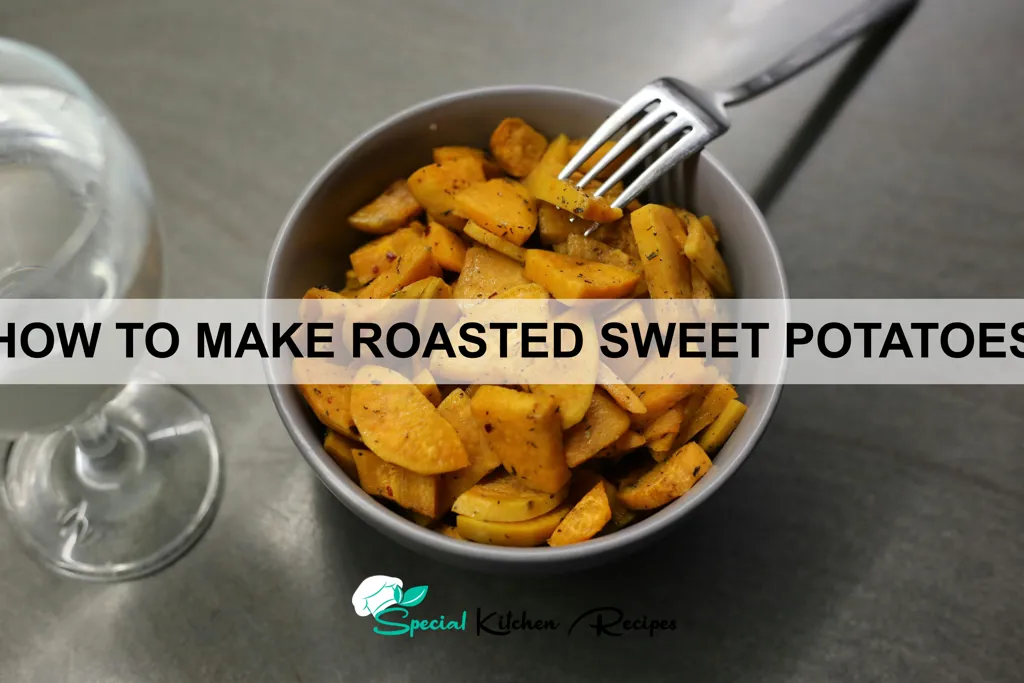Sweet potatoes, a staple in many cultures worldwide, boast a rich history far exceeding their current popularity as a trendy health food. Originating in Central and South America, these vibrant tubers have been cultivated for over 8,000 years, with evidence suggesting their domestication predates even maize. Ancient civilizations, including the Inca and Aztec, recognized their nutritional value and incorporated them into their diets, utilizing them in various culinary preparations. Unlike their close relative, the white potato, which arrived in Europe much later, sweet potatoes made their way across the globe through early trade routes and colonial expansion.
The sweet potato’s global journey is fascinating. Spanish conquistadors introduced them to Europe in the 16th century, though they initially gained limited traction. However, they found a more welcoming environment in Asia, particularly in China and Japan, where they quickly integrated into the local cuisines. Today, China is the world’s leading producer of sweet potatoes, accounting for over 70% of global production, followed by Uganda and Nigeria. This widespread cultivation highlights the crop’s adaptability and resilience to various climates and soil conditions. Interestingly, while often perceived as a side dish in Western cultures, in many parts of the world, the sweet potato serves as a significant carbohydrate source, forming the basis of countless meals.
Beyond their economic importance, sweet potatoes hold significant cultural and symbolic value. In some cultures, they are associated with abundance and prosperity, while in others, they feature prominently in traditional celebrations and festivals. Their vibrant orange flesh, rich in beta-carotene, a precursor to Vitamin A, has also made them a crucial component in addressing nutritional deficiencies in developing countries. The versatility of sweet potatoes is undeniable; they can be boiled, mashed, fried, baked, or, as we will explore in this recipe, roasted to perfection, bringing out their natural sweetness and creating a delicious and healthy dish.
Ingredients and Measurements
This recipe yields approximately 4 servings of delicious roasted sweet potatoes. The quantities can be easily adjusted to suit your needs – simply multiply or divide the ingredients proportionally.
Sweet Potatoes: You’ll need 2 large sweet potatoes (approximately 1 pound total). Choose sweet potatoes that are firm to the touch, without any soft spots or bruises. The size can vary, but aiming for roughly equal-sized potatoes will ensure even roasting. If using smaller sweet potatoes, you may need to adjust the roasting time slightly.
Olive Oil: 2 tablespoons of extra virgin olive oil are recommended. High-quality olive oil adds a rich flavor to the roasted sweet potatoes. You can substitute with another neutral-flavored oil like avocado oil, but the flavor profile will differ slightly. Don’t be tempted to use less oil, as it helps crisp the skin and prevents sticking.
Spices: This is where you can get creative! The base recipe calls for 1 teaspoon of ground cinnamon and ½ teaspoon of ground nutmeg. These warm spices complement the sweetness of the sweet potatoes perfectly. However, feel free to experiment with other spices such as paprika (smoked paprika adds a lovely depth), garlic powder, onion powder, or even a pinch of cayenne pepper for a little heat. Remember to adjust the quantity of spices according to your preference.
Salt and Pepper: Start with ½ teaspoon of kosher salt and ¼ teaspoon of freshly ground black pepper. Salt is crucial for enhancing the natural sweetness of the sweet potatoes, while freshly ground black pepper adds a touch of complexity. Adjust seasoning to taste once the sweet potatoes are cooked.
Optional additions: For extra flavor and texture, consider adding other ingredients such as: 1 tablespoon of maple syrup or honey for extra sweetness; a sprinkle of chopped fresh herbs (rosemary, thyme, or sage) for an aromatic touch; or a drizzle of balsamic glaze after roasting for a tangy finish. These additions should be incorporated towards the end of the roasting time to prevent burning.
Important Note: Always wash your sweet potatoes thoroughly before preparing them. Scrub them under cold running water to remove any dirt or debris.
Equipment and Utensils
Roasting sweet potatoes is a relatively straightforward process, but having the right equipment and utensils will significantly enhance the outcome and your experience in the kitchen. Let’s break down the essentials.
Baking Sheet: You’ll need at least one large baking sheet (approximately 18 x 13 inches) to comfortably accommodate your sweet potatoes. A rimmed baking sheet is preferable as it prevents any escaping juices from spilling over and making a mess in your oven. Consider using two baking sheets if you’re roasting a large quantity of sweet potatoes to ensure even cooking and prevent overcrowding.
Mixing Bowls: You’ll need at least one medium-sized mixing bowl (approximately 8-10 inches in diameter) for tossing the sweet potatoes with oil and seasonings. A larger bowl is beneficial if you plan on adding other vegetables or ingredients to the roasting pan.
Measuring Cups and Spoons: Accurate measurements are key to achieving consistent results. Invest in a set of reliable measuring cups (1 cup, ½ cup, ⅓ cup, ¼ cup) and measuring spoons (1 tablespoon, 1 teaspoon, ½ teaspoon, ¼ teaspoon) to ensure you use the correct amount of oil and seasonings.
Whisk or Fork: A whisk is ideal for thoroughly combining the oil and seasonings, especially if you’re using a dry rub. A fork will also suffice, but a whisk ensures a more even coating.
Vegetable Peeler: Unless you prefer to leave the skins on (which is perfectly acceptable!), you’ll need a sharp vegetable peeler to easily remove the skins from the sweet potatoes. A good quality peeler will make this task much quicker and less frustrating.
Chef’s Knife: A sharp chef’s knife (approximately 8 inches) is crucial for efficiently cutting the sweet potatoes into even-sized pieces. Consistent sizing is essential for even roasting. Aim for approximately 1-inch cubes or wedges for optimal results. If you’re using smaller sweet potatoes, you can cut them into halves or quarters.
Optional but Recommended: A silicone basting brush can be helpful for applying oil evenly to the sweet potatoes. A wire rack placed inside the baking sheet allows for better air circulation and crispier results, although it’s not strictly necessary.
Important Note: Before you begin, make sure all your equipment is clean and dry. This prevents any unwanted flavors or sticking during the roasting process.
Preparation and Prepping Sweet Potatoes
Selecting the right sweet potatoes is the first step to achieving perfectly roasted results. Look for firm, smooth-skinned sweet potatoes without bruises or soft spots. Avoid potatoes with any signs of sprouting or decay. The size isn’t critically important, but aim for medium-sized sweet potatoes (about 6-8 inches long) for even roasting. You can easily adjust the recipe based on the number of potatoes you use and the size of your oven.
Washing your sweet potatoes thoroughly before prepping is crucial. Use a vegetable brush to remove any lingering dirt or debris from the surface. Thoroughly rinsing removes excess soil and potential pesticides. A good scrub under cool running water is all you need.
There are several ways to prepare your sweet potatoes for roasting. One common method is to leave the skins on. This adds texture and nutrients to the final dish. However, if you prefer a smoother texture, you can peel the potatoes. To peel, use a vegetable peeler to carefully remove the skin. Peeling is optional, but remember that the skin contains many beneficial nutrients.
Regardless of whether you peel them or not, you need to cut the sweet potatoes into uniform pieces. This ensures even cooking. Aim for roughly 1-inch cubes or thick wedges. Consistent sizing is key for even roasting; larger pieces will require longer cooking times. For smaller sweet potatoes, you might even be able to halve or quarter them lengthwise.
After cutting, you can optionally soak the sweet potatoes in cold water for about 15 minutes. This helps to remove some of the excess starch, which can lead to crispier results. Soaking is optional but recommended for extra crispy edges. After soaking, drain the sweet potatoes thoroughly before proceeding with the roasting process. Pat them dry with paper towels to remove excess moisture. This will help the potatoes brown properly in the oven.
Finally, before tossing the sweet potatoes with oil and seasonings, make sure they are completely dry. Excess moisture will prevent them from crisping up properly. Dry sweet potatoes are essential for achieving a perfectly roasted texture.
Roasting Techniques (Oven Temperature, Time, Placement)
Achieving perfectly roasted sweet potatoes hinges on mastering oven temperature, roasting time, and strategic placement within the oven. These seemingly minor details significantly impact the final texture and flavor of your sweet potatoes.
Oven Temperature: The ideal oven temperature for roasting sweet potatoes is between 400°F (200°C) and 425°F (220°C). Temperatures lower than 400°F will result in a longer cooking time and may lead to soggy sweet potatoes. Temperatures exceeding 425°F can cause the outside to burn before the inside is cooked through. Consistency is key; maintaining a stable oven temperature throughout the roasting process is crucial for even cooking.
Roasting Time: The cooking time depends on the size and type of sweet potatoes you’re using. For medium-sized sweet potatoes (about 6-8 inches long), expect a roasting time of approximately 45-60 minutes. Larger sweet potatoes will require an additional 15-20 minutes, while smaller ones may cook in as little as 30 minutes. Use a fork or knife to check for doneness; the sweet potato should be easily pierced and tender throughout. Over-roasting will lead to dry, hard sweet potatoes.
Placement within the Oven: Proper placement within the oven ensures even heat distribution and prevents uneven cooking. Avoid overcrowding the baking sheet; this restricts airflow and leads to steaming rather than roasting. Leave at least an inch of space between each sweet potato. For optimal results, position the baking sheet in the center rack of the oven. This ensures that the sweet potatoes are exposed to consistent heat from all sides. If your oven has hot spots, you may need to rotate the baking sheet halfway through the cooking time to ensure even browning and cooking.
Professional Recommendation: For extra crispy skin, consider tossing the cubed or halved sweet potatoes with a tablespoon or two of olive oil, salt, and pepper before roasting. This helps to enhance the flavor and create a beautiful caramelization. Also, preheating your oven is essential; ensure your oven reaches the desired temperature before placing the sweet potatoes inside. This guarantees even cooking from the start.
By carefully controlling these three factors – oven temperature, roasting time, and placement – you can consistently achieve perfectly roasted sweet potatoes with a tender interior and deliciously crispy exterior.
Flavor Enhancements (Spices, Herbs, Oils)
Elevating your roasted sweet potatoes from simple to spectacular hinges on the right flavor enhancements. The key is to balance sweetness with savory and spicy notes, allowing the natural sweetness of the sweet potato to shine through.
Oils: The choice of oil significantly impacts the final texture and flavor. Olive oil (1-2 tablespoons per pound of sweet potatoes) lends a fruity and slightly peppery taste, while avocado oil (1-2 tablespoons per pound) offers a more neutral flavor and high smoke point, ideal for achieving crispy edges. Coconut oil (1-2 tablespoons per pound) adds a subtle sweetness and tropical aroma, a particularly good choice for pairings with cinnamon or other warming spices.
Spices: A little goes a long way with spices. Start with a base of 1/2 teaspoon of salt and 1/4 teaspoon of black pepper per pound of sweet potatoes. From there, experiment with your favorites! Smoked paprika (1/2 – 1 teaspoon) adds a smoky depth, while cumin (1/4 – 1/2 teaspoon) provides an earthy warmth. Cinnamon (1/2 – 1 teaspoon) complements the natural sweetness beautifully, especially when paired with a pinch of nutmeg (1/8 – 1/4 teaspoon).
Herbs: Fresh herbs bring vibrant freshness and aromatic complexity. Rosemary (1-2 sprigs, chopped) and thyme (1-2 teaspoons, chopped) pair wonderfully with sweet potatoes, lending a slightly piney and earthy flavor. Sage (1 teaspoon, chopped) provides a slightly more assertive, savory note. For a touch of brightness, consider adding a sprinkle of freshly chopped parsley or chives after roasting. Remember to add herbs towards the end of the roasting time to prevent them from burning.
Professional Recommendation: Don’t be afraid to experiment! Try combining different spices and herbs to create your signature blend. A good starting point is to choose one dominant spice (like paprika or cumin) and complement it with a few supporting herbs and spices. Consider the other ingredients in your meal when selecting flavor enhancements. For example, if you’re serving the sweet potatoes with a chili, you might opt for a simpler spice blend to avoid overwhelming the palate.
Important Note: Always taste and adjust seasoning as needed throughout the cooking process. The roasting time and oven temperature will influence how intensely the flavors develop. Start with smaller quantities of spices and herbs, and add more to taste if necessary.
Cooking and Checking for Doneness
Once your sweet potatoes are prepped (washed, peeled, and cubed or sliced – approximately 1-inch pieces are ideal), it’s time to roast them to perfection. Preheat your oven to 400°F (200°C). This temperature ensures even cooking and a beautifully caramelized exterior. For a 2-pound batch of sweet potatoes, you’ll need a large roasting pan or baking sheet.
Toss the sweet potato pieces with 2 tablespoons of olive oil. This helps them brown and prevents sticking. Season generously with salt and pepper. Consider adding other spices to enhance the flavor; 1 teaspoon of cinnamon, ½ teaspoon of nutmeg, or a pinch of cayenne pepper all work wonderfully. Don’t be shy with the seasoning! The sweet potatoes will absorb the flavors beautifully during roasting.
Spread the sweet potatoes in a single layer in your prepared pan. Avoid overcrowding the pan, as this will lead to steaming instead of roasting, resulting in soggy potatoes rather than crispy ones. If necessary, use two pans to ensure even cooking.
Roast for approximately 25-35 minutes, or until a fork easily pierces the center. Cooking time will vary depending on the size of your sweet potato pieces and your oven. Smaller pieces will cook faster, while larger ones will require more time. Start checking for doneness around the 25-minute mark.
To check for doneness, insert a fork into the thickest part of a sweet potato. It should slide in easily, with minimal resistance. If it meets with resistance, give the potatoes another 5-10 minutes and check again. Overcooked sweet potatoes will be mushy, while undercooked ones will be firm and slightly hard.
Once cooked, remove the pan from the oven and let the sweet potatoes rest for a few minutes before serving. This allows them to cool slightly and makes them easier to handle. The residual heat will continue to cook the potatoes slightly, ensuring they are perfectly tender. Serve immediately and enjoy your delicious roasted sweet potatoes!
Professional Tip: For extra crispy sweet potatoes, increase the oven temperature to 425°F (220°C) during the last 5-7 minutes of cooking. Keep a close eye on them to prevent burning.
Recommendations
For optimal roasting, ensure your sweet potatoes are uniformly sized for even cooking. Smaller pieces will roast faster than larger ones. Consider cutting your sweet potatoes into roughly 1-inch cubes or wedges for best results. If you prefer a crispier exterior, toss the sweet potatoes in a little oil before roasting and spread them out in a single layer on the baking sheet.
Serving Suggestions: Roasted sweet potatoes are incredibly versatile. They are delicious as a simple side dish, a hearty addition to salads, or as a base for bowls. Try them with a sprinkle of fresh herbs like rosemary or thyme, a drizzle of maple syrup or honey, or a sprinkle of chili flakes for a spicy kick. They also pair wonderfully with crumbled feta cheese, toasted nuts, or a dollop of Greek yogurt.
Complementary Dishes: Roasted sweet potatoes make an excellent accompaniment to a variety of main courses. They complement roasted chicken, pork tenderloin, grilled salmon, and vegetarian chili exceptionally well. Their sweetness also balances the savory flavors of many dishes. Consider serving them alongside a protein source and a leafy green salad for a well-rounded meal.
Storage: Store leftover roasted sweet potatoes in an airtight container in the refrigerator for up to 3-4 days. To reheat, you can microwave them, bake them again in the oven, or add them to a skillet with a little oil for a crispy finish. Avoid freezing roasted sweet potatoes, as their texture may change significantly upon thawing.
Nutritional Information (per 1 medium sweet potato, approximately 114g): Calories: Approximately 103; Carbohydrates: 24g; Fiber: 3g; Sugar: 9g; Protein: 2g; Vitamin A: Excellent source; Vitamin C: Good source; Potassium: Good source. Note: Nutritional information may vary slightly depending on the size and type of sweet potato used, as well as any added ingredients.
Important Note: The calorie and nutritional information provided is an estimate and may vary based on the specific sweet potato and preparation method. For precise nutritional data, consult a nutrition calculator or database, taking into account added ingredients like oil or spices.





